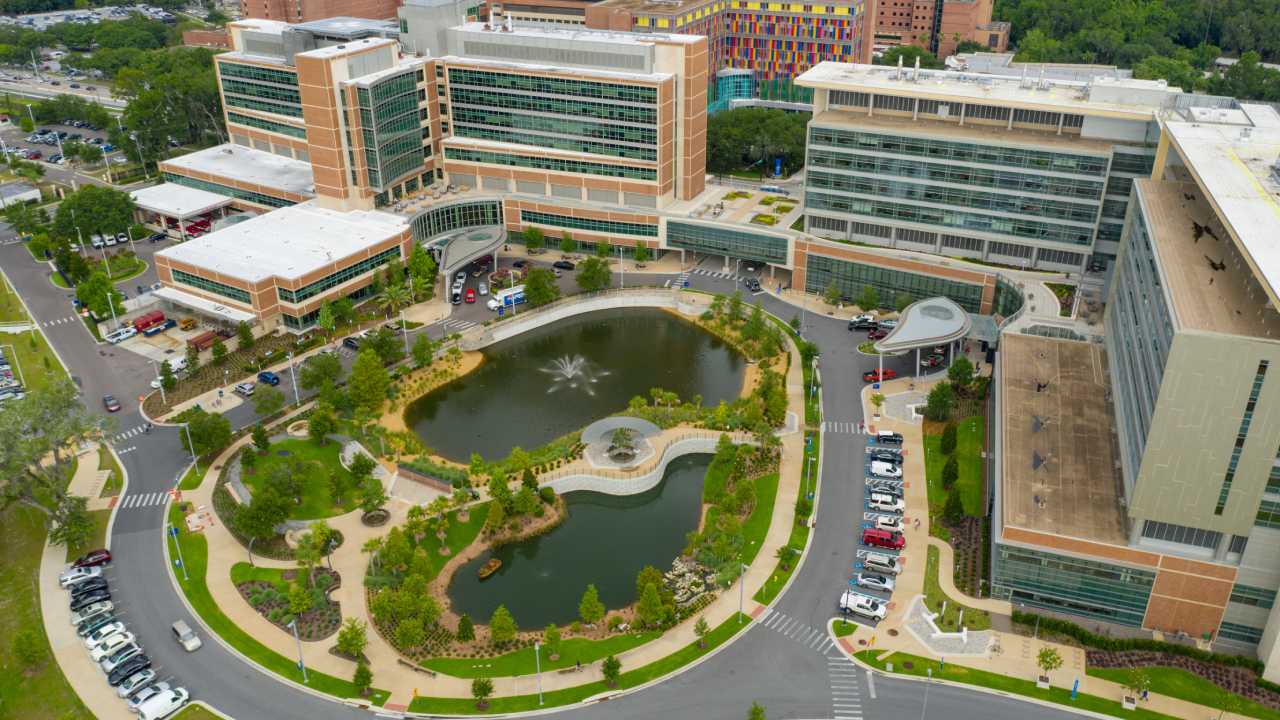What Is IT/OT Convergence and What Should You Do About It?
In today’s complex environments, such as large university, pharmaceutical, and hospital campuses, the convergence of information technology (IT) and operational technology (OT) — or IT/OT convergence — has emerged as a critical topic we can no longer ignore.
IT/OT convergence means integrating traditionally distinct IT and OT systems to create new opportunities for efficiency and innovation. It’s vital for owners, operators, and managers of campuses with diverse buildings and critical systems to understand the potential of this convergence.
By integrating IT systems (networks, servers, data analytics, etc.) with OT systems (building automation, energy management, HVAC, security systems, etc.), you can gain comprehensive control and visibility over various aspects of your operations. In this article, we’ll discuss the significance of IT/OT convergence and shed some light on how it can elevate your organization’s performance.
Holistic Control and Management through IT/OT Convergence
Integrating IT and OT systems empowers you to exercise holistic control and management over operations. By converging IT networks, data analytics, and automation technologies with OT systems (such as building management, security, laboratory controls, and critical infrastructure), you can gain real-time visibility and control over the entire campus ecosystem.
Convergence enables centralized monitoring, rapid response to anomalies, and comprehensive data-driven decision-making. This enhances operational efficiency, optimizes resources, and streamlines processes across diverse buildings and systems. Let’s take a look at some of the benefits.
Proactive Maintenance and Risk Mitigation
With IT/OT convergence, you can shift from reactive to proactive maintenance and risk mitigation practices. By leveraging real-time data analytics, predictive maintenance algorithms, and condition monitoring, you can identify and address potential issues in critical systems before they manifest as failures or disruptions.
This proactive approach is intended to reduce downtime, prevent costly equipment failures, and ensure the reliability and longevity of critical assets. It can also help you comply with stringent regulatory requirements and minimize operational risks associated with sensitive environments, such as pharmaceutical production facilities and research laboratories.
Data-Driven Insights and Optimization
The convergence of IT and OT systems generates a wealth of data that, when properly analyzed, offers valuable insights and optimization opportunities. You can leverage advanced analytics, machine learning, and artificial intelligence to gain deep insights into energy consumption patterns, space use, laboratory workflows, and environmental conditions.
This data-driven approach allows you to identify opportunities for energy conservation, space optimization, process improvements, and cost savings. By harnessing these insights, you can optimize resource allocation, drive sustainability initiatives, and continuously enhance operational performance across your diverse facilities ecosystem.
Enhanced Security and Compliance
These days, security and compliance are important to just about every organization. IT/OT convergence provides a comprehensive framework for enhancing security, monitoring, and compliance management.
By integrating physical security systems, access controls, video surveillance, and intrusion detection with IT networks and centralized monitoring platforms, you can establish a robust security infrastructure. This enables real-time threat detection, rapid incident response, and adherence to compliance standards. Used correctly, IT/OT convergence can help you safeguard critical assets, protect sensitive research, and ensure the safety of occupants.
Optimized Campus Experience
Large campuses encompass a variety of buildings and facilities that serve diverse stakeholders, including researchers, students, faculty, and staff. IT/OT convergence has a transformative potential to optimize the campus experience for all stakeholders. By integrating building automation systems, smart controls, and occupant-facing technologies, you can create a seamless, comfortable, and personalized environment.
For instance, dashboards and kiosks can be created for end users, occupants, and facilities managers alike. This convergence not only enhances productivity and satisfaction, but also attracts top talent, fosters innovation, and elevates the overall reputation of your organization.

How Do We Navigate This New Era of IT/OT?
The convergence of IT and OT creates new challenges for IT, operations, and capital projects teams.
As a facility owner, it’s important to engage your IT stakeholders early in new construction or renovation projects to outline the ground rules for network architecture and IT connection requirements. To maintain project schedule and deliver a project that complies with your organization’s governing requirements, it’s critical to consider network switch management, port count, ethernet wiring, virtual vs. physical network, network topology, and the timing of the integration between your OT and IT systems.
Related: Why Building Automation Needs to Be Part of Your New Project from the Start >>
On the OT side, if your distribution network was mostly a BACnet MS/TP serial network, you will need to explore new technologies for data traffic management and controlling your systems. If your organization requires a dedicated physical network for your BMS, you might need to consider an increase in service contract costs for a vendor to manage new devices (such as network switches or routers) that traditionally might not have been part of the operations team’s purview.
On the IT side, if your organization requires all network switches be managed and provided by the IT department for security and standardization, your IT network must become an integral part of your critical systems operations arena, requiring potential for 24/7 response or critical system alarm integration.
Conclusion
The convergence of IT and OT systems presents an unparalleled opportunity for building owners to achieve operational excellence and drive innovation. By embracing IT/OT convergence, you can gain holistic control, proactive maintenance capabilities, data-driven insights, enhanced security, and optimized experiences.
For IT, operations, and capital projects teams, there are many considerations and impacts associated with navigating this new era. As technology continues to advance, stay up to date on the latest trends and collaborate with industry experts to maximize the benefits of IT/OT convergence. By investing in this convergence, you can future-proof your facilities and elevate your competitive edge in the market.
Interested in learning more about IT/OT convergence and the next steps you should take?

